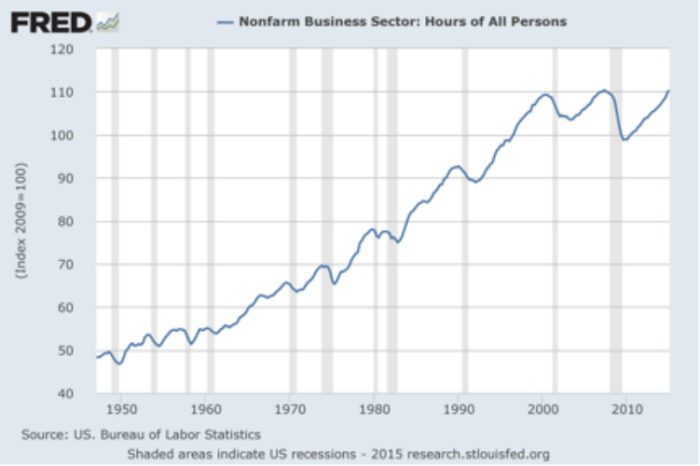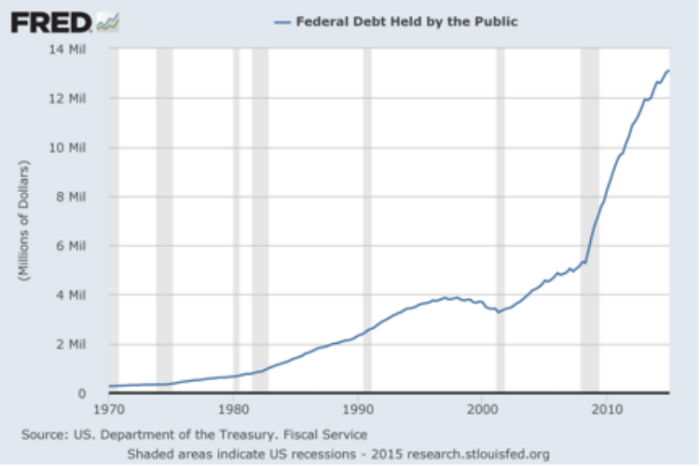May Jobs Report: Owing Your 'Soul' to the Company Store

This Friday the Labor Department will release the Jobs Report for May. The monthly Jobs Report is based on data from a survey of 60,000 households and from a separate survey of business establishments. The Bureau of Labor Statistics uses the data to estimate the unemployment rate and the number of jobs added to the economy in the just ended month. They also revise the estimates made for the prior two months to take into account more complete information.
Last month's report for April was an estimated gain of 233,000 jobs, but March was only 85,000 additional jobs. It takes over 150,000 additional jobs per month to absorb the growth in the labor force as young workers enter the work force and older workers retire. We can hope that the progress seen in April will continue in May and beyond.
When the jobs report is released on Friday morning, there will be instant analysis on Wall Street and again on the Sunday talk shows. Pundits will discuss the political and economic implications of whatever the outcome turns out to be. As a student of the economy, this is all interesting to me. But sometimes we need to step back from the instant moment to gain perspective. The graph below illustrates my point.

This graph shows an index of total hours worked in the private nonfarm business sector. As you can see, the hours worked in the economy are just now surpassing the peak hours worked when President Clinton was in office. Only since November 2014 has the hours worked index exceeded the level achieved in April 2000. By this measure of how well the economy is performing, there has been a lost decade and a half. First the dot com bust in 2001, and then the financial crisis of 2008 did their damage. It would certainly be good news to see hours worked finally break out and go higher.
The 8.5 million people unemployed would obviously like to see total hours worked increase. But another reason to cheer this number on to new heights is that these hours worked are the source of income to pay for the government we have today, and the debt burden left over from the government we had yesterday. As more hours are worked, the burden of taxes and interest on the debt is shared with other workers.

The chart above shows the Federal Debt Held by the Public. This means it excludes the $5 trillion in IOUs that the government owes to the Social Security Trust Funds. I do not agree that IOUs to Social Security should be ignored, but they are often excluded on the basis that it is "debt we owe ourselves" (as argued by Paul Krugman). Accordingly, it is excluded here. One can easily see from the graph that federal debt has exploded since 2008. To gain perspective on what this debt means to working people, I calculated the Federal debt above in relation to hours worked. This analysis is shown in the next chart below.

The chart above shows the Federal debt held by the public in relation to the total hours worked in the private nonfarm business sector. The last data point shown is January 2015. Each hour worked has to pay the interest burden on $54.04 of debt. In a "normal" interest environment of say 4% interest rates on government debt, that burden would be $2.16 per hour. Every hour worked would need to be taxed $2.16 just to pay the interest on the debt held by the public. The normalized (i.e. 4%) interest burden on federal debt was $0.69 per hour at the start of the Clinton Administration, $0.58 per hour at the start of the Bush Administration, and $1.22 per hour at the start of the Obama Administration.
As shown in the Clinton Administration, it is possible to reduce the burden on hours worked. The fiscal restraint of the Contract with America, and the jobs boom driven by the internet and Y2K caused debt to decrease and total hours worked to increase. We are not likely to get fiscal restraint out of Washington these days, so we have to hope for a good jobs report.
This dismal analysis brings to mind the song Sixteen Tons by Merle Travis, and made famous by Tennessee Ernie Ford.
You load sixteen tons, what do you get
Another day older and deeper in debt
Saint Peter don't you call me 'cause I can't go
I owe my soul to the company store.




























